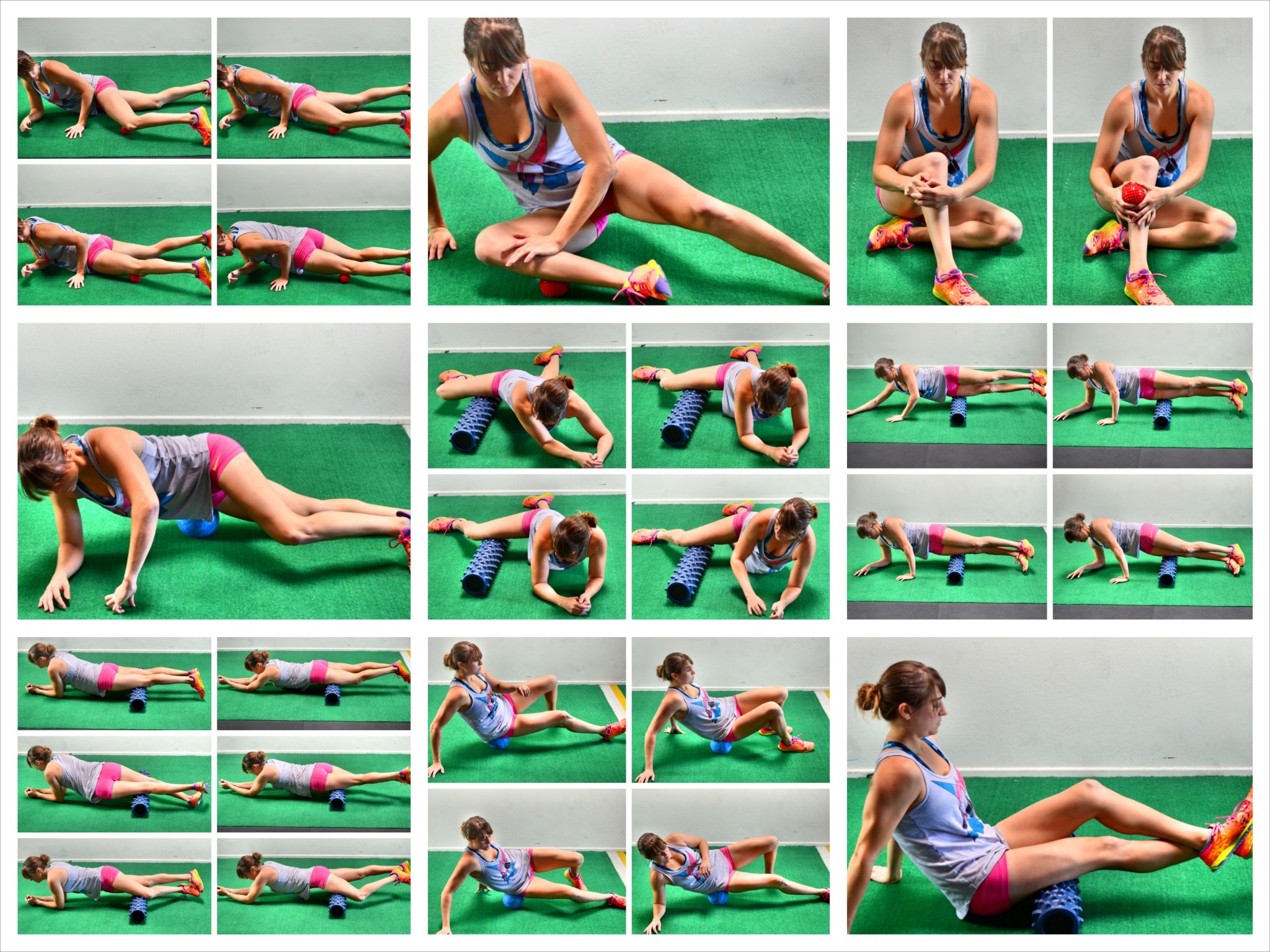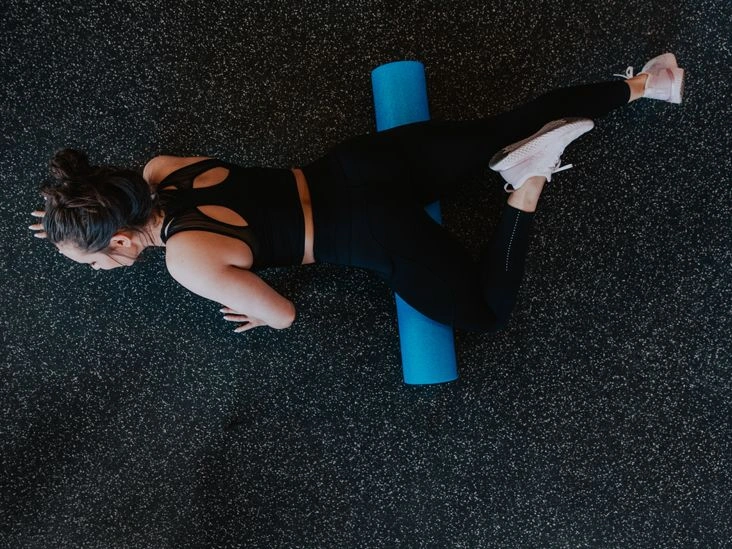Foam rolling is a form of self-myofascial release (SMR). It can help alleviate muscle tightness, soreness, and inflammation, while also improving joint range of motion.
Using a foam roller can be a useful addition to your warm-up or cooldown around exercise. The effects of foam rolling can differ between individuals.
Continue reading to learn about the advantages and possible downsides of foam rolling, plus guidance on how to incorporate it into your routine.

1. Ease muscle pain
Foam rolling may help reduce sore muscles and decrease inflammation.
One small study of eight male participants showed that foam rolling after exercise could lessen delayed-onset muscle soreness. In that trial, physically active men foam rolled for 20 minutes immediately after exercising and again at 24 and 48 hours post-exercise.
Those who used the foam roller experienced less delayed-onset muscle soreness compared with exercising without foam rolling. They also performed better on physical tasks than the non-foam-rolling group.
Larger and more diverse studies are needed to firmly establish how foam rolling impacts muscle pain.
2. Increase range of motion
Foam rolling might help expand your range of motion, though additional research is required. Range of motion matters for flexibility and performance.
Researchers reported findings from a small study of 11 adolescent athletes that combining foam rolling with static stretching produced the greatest improvements in range of motion compared with static stretching or foam rolling alone.
Further investigation in broader populations is necessary to fully understand the relationship between foam rolling and range of motion.
For optimal outcomes, consider stretching and foam rolling after each workout.
3. Temporarily reduce appearance of cellulite
Some sellers of foam-rolling tools claim their products can loosen and break up fascia, the connective tissues that contribute to the look of cellulite.
While foam rolling may temporarily smooth the surface of your skin, there’s no strong scientific evidence that it produces lasting cellulite reduction.
The most effective long-term strategy to lessen cellulite appearance is to stay active and follow a balanced, healthy diet.
4. Relieve back pain
SMR techniques are sometimes used for pain relief throughout the body and may help reduce back tension as well.
However, you should be cautious when foam rolling the back because it’s easy to strain or worsen an existing issue.
To address lower back discomfort, position the foam roller so it runs vertically (parallel to your spine) and gently roll it side to side while keeping it aligned with the spine. Avoid placing the roller horizontally, which can make you arch and increase strain on the back.
Alternatively, lying on a foam massage ball or a tennis ball can help target knots in the back.
5. Manage fibromyalgia symptoms
SMR has shown encouraging results for easing symptoms of fibromyalgia.
In one study of 66 adults with fibromyalgia, participants who foam rolled for 20 weeks reported feeling better and experienced reductions in pain intensity, fatigue, stiffness, and depression compared with those who didn’t use SMR techniques. They also reported improved range of motion.
Although these results are promising, more research is required to confirm foam rolling’s effectiveness for treating fibromyalgia symptoms.
6. Help you to relax
Many people find foam rolling calming. Releasing muscular tightness can make you feel less tense and more relaxed. However, limited evidence supports foam rolling specifically as a stress-reduction method.
In one study, 20 female participants either foam rolled or rested for 30 minutes after walking on a treadmill. Researchers did not find a significant difference in stress reduction between foam rolling and resting.
More study is needed. Meanwhile, if you personally find foam rolling relaxing, it’s reasonable to include it in your routine.
Is foam rolling safe?
Foam rolling is generally safe for people who experience muscle tightness or who exercise regularly. Avoid foam rolling if you have a serious injury, such as a muscle tear or fracture, unless cleared by your doctor or a physical therapist.
Also steer clear of rolling directly over small joints like the knees, elbows, and ankles, which could lead to hyperextension or damage. When rolling the legs, start with the calves and then roll the quads separately, keeping clear of the knee area.
Foam rolling can sometimes relieve tension during pregnancy, but obtain medical clearance first and avoid lying on your back while foam rolling later in pregnancy. You should also avoid rolling the calves in the third trimester, as it may risk premature labor. Consult your healthcare provider if you have concerns.
How to choose a foam roller
Foam rollers are typically cylindrical and made from dense foam, though they come in a variety of sizes, shapes, and firmness levels.
It may take trial and error to identify the roller that suits you best. Try different models before buying to find one that feels comfortable.
Common types of foam rollers available online include:
- Smooth rollers have a uniform, dense foam surface and are ideal for beginners. They provide even pressure and are less intense than textured options, and tend to be more affordable.
- Textured rollers feature ridges and knobs to penetrate deeper into muscle tissue and help work out knots and tension.
- Foam-covered massage sticks can be used for deeper massage of the legs or upper back.
- Foam massage balls are useful for targeting specific muscle areas, such as shoulder knots.
Consider shape and size when selecting a roller. A shorter roller is better for smaller areas like arms and calves and is more portable if you travel with it.

How to start foam rolling
If you’re new to foam rolling, learn some basics before you begin. There are many “foam rolling for beginners” videos online that demonstrate safe techniques for different body parts.
If you exercise at a gym, ask a trainer to show you how to use a roller safely. You can also join foam rolling classes to learn proper methods.
In general, follow these tips to begin:
- Start with light pressure and gradually increase as you adapt. Foam rolling can be painful initially if muscles are tight. To reduce pressure, lessen the amount of your body weight on the roller. For example, when rolling a calf, use your arms to support some weight so the roller carries less load.
- Gently roll tender spots for about 10 seconds at first, then work up to 30–60 seconds per spot.
- Drink plenty of water after foam rolling to support recovery.
If you’d like additional guidance, here are 8 foam rolling moves you can try.
Takeaway
Foam rolling can be a practical way to ease muscle tension before a workout, particularly if you’re carrying residual tightness from prior sessions.
It’s also a valuable tool for cooling down after exercise.
Adding a foam roller to your pre- and post-workout routine may reduce soreness in the days that follow.
Foam rolling can help if you sit or stand for long periods at work or simply experience general aches and pains.
Always consult your doctor before introducing new tools into your regular routine.


















Leave a Reply
You must be logged in to post a comment.